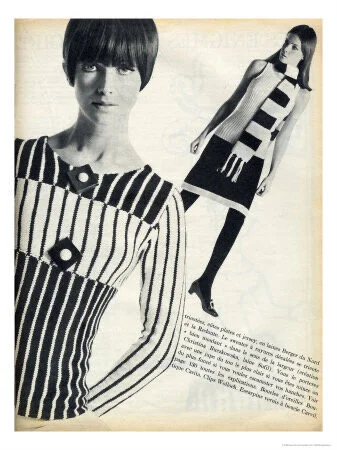From Sportswear to Casualwear: Knitting and its History
Knit fabrics, known for being stretchy, lightweight, and cheap, have been drifting in and out of fashion trends throughout both the 20th and 21st centuries. It seems that this summer, knitwear has recaptured its sweeping popularity and shaped this upcoming season’s trends.
The affordable quality and versatility of knit fabric has historically made the material indispensable for clothing production. Following knitwear’s industrialization and, in turn, commercialization, this form of clothes-making has become an integral part of casual wear and sportswear since the 1920s.
When you think of this summer’s knit dresses (marked by bright colours, funky patterns, and low-back cuts), knitwear might seem like an embodiment of cocktail parties and promenade strolls. However, historically, knitwear flourished in sportswear and only graced women’s casual wear in the 1930s.
The years 1929 to 1930 were tainted by an era of economic depression. The creative and seemingly endless combinations of colours produced by scraps of cheap yarn were an ideal low-cost form of artistic self-expression. But knitwear, marked by its traditionality and simultaneous novelty, infiltrated all social ranks. French fashion designer Jean Patou, drawing influence from the bold patterns of modern art, popularized jersey-knit dresses for women in the early 30s. These collections, sold in French Riviera boutiques, dragged knitwear away from strictly fashionable sportswear and re-modelled it into more fitting (and flattering) shapes.
Following World War II, knitwear maintained its popularity. The recycling of wool and knit garments was seen as a meaningful part of the war effort as resources were low, and every textile needed to be capitalized on. Utilitarian fashion expedited the demand for knitwear. Artistic expression transformed into a necessity, and as such, the home front was knitting for victory!
As home knitting grew in popularity, it was embraced by youth culture. In the mid-60s, knitwear represented the modern and anti-traditional sentiment. Mary Quant, one of the most iconic designers of the mid-20th century, launched a knit mini-dress line in the 1960s. Modelled by supermodel Twiggy in 1966 Vogue, these cheeky dresses quickly grabbed the attention of young women, and the demand for knitwear soared.
Although the 80s were a decade where sportswear became casualwear, the popularity of knitting lessened, knit textiles were deemed outdated by the fashion community. At this point, knitwear was mass-produced, and it lost its home-made, hand-crafted appeal. It was not until the 1990s, when androgynous knitwear styles took flight, that this textile regained its trend-setting momentum.
Now, knitwear is back and better than ever! This summer, brands like Verge Girl and House of Sunny have taken over every fashion blogger and influencer’s social media page. Lush green, bright yellow, and tangy orange knit dresses of all lengths have signalled a return of knitwear. This unwavering restoration of popularity begs the questions, will knitwear’s vibrant return to the fashion scene be long-lasting? We can only hope!




